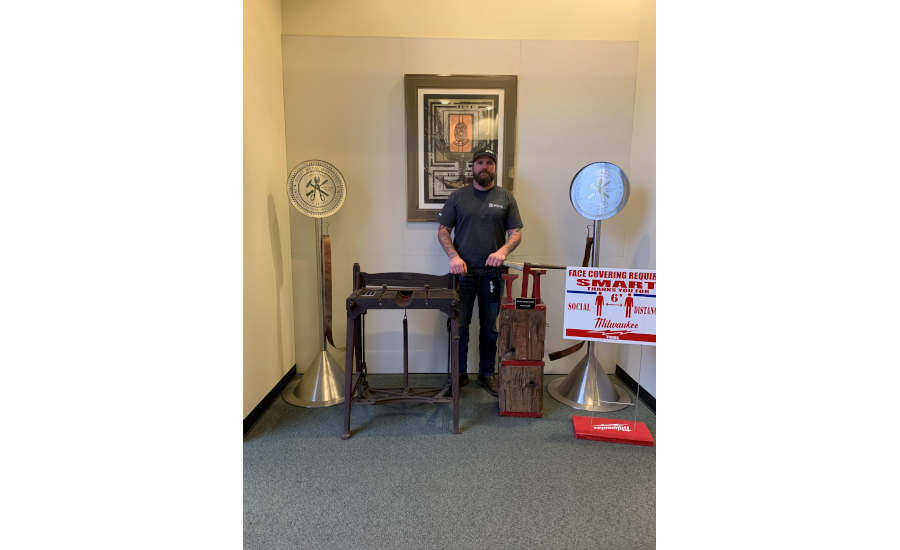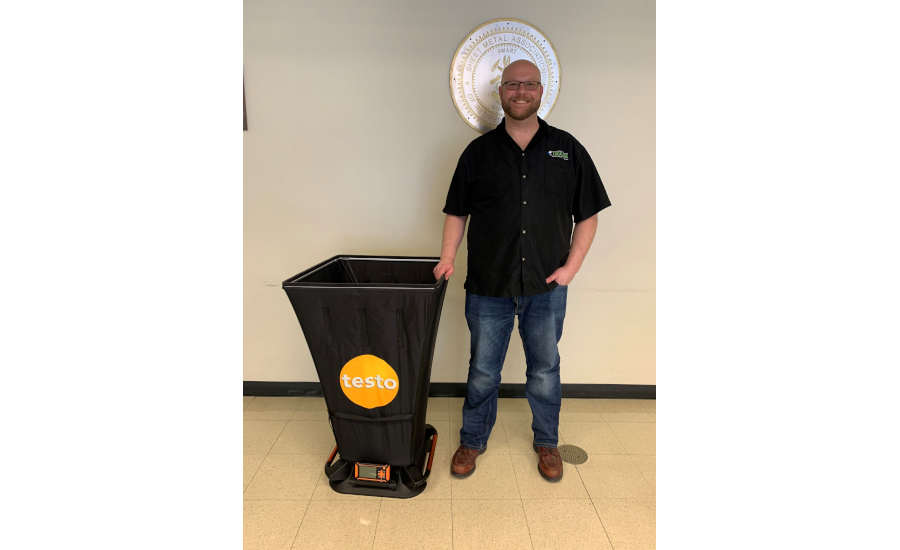The more than 9,000 sheet metal workers represented by Sheet Metal Workers' Local Union 104 span 49 California counties, from Ventura County to the Oregon border, including the region of Silicon Valley.
As COVID-19 kept everyone away from Local 104’s union hall in San Jose, California, an early adoption of virtual learning and zoom-based classes kept their sheet metal apprentices learning through lockdown.
“We are fortunate to have a wealth of very talented, very dedicated people in our Local. Our administrators are very on top of keeping up with technology, advancements, and the trends of the industry,” says training coordinator Brad De Young.
A roster of part-time and full-time instructors manage a robust four-year sheet metal apprenticeship program that covers sheet metal fabrication, ductwork installation, detailing, testing and balancing of sheet metal products and HVAC service. Guidance from the Sheet Metal, Air, Rail and Transportation Workers (SMART) union sets standards for a core curriculum. Dedicated instructors enrich the coursework.

“The most important role involved with (this) position is to help guide the apprentices in whatever manner possible,” says Young, “for them to have a successful apprenticeship and push themselves to achieve beyond what their original goal was.”
Today’s apprentices are tomorrow’s company owners, department heads and forepersons. “With all due respect to the other trades,” says Young, “I feel very strongly that a well-trained union sheet metal worker is by far the best skilled tradesman around. Our trade has so much variety you will never run out of new things to learn and pursue.”
Brandon Manley, a recently graduated sheet metal apprentice, had no doubt that a career in sheet metal work was the right path for him. His focus is on architectural sheet metal.
“My uncle retired from sheet metal, and I have two cousins who are journeyman in Local 104,” he says. “I never thought about joining any other trade. But now that I know, I’m still glad with the choice that I went with.”
Apprentice Greg Castaneda married into the trades. “Nobody in my immediate family is in a skilled trade, but I married into a family that had multiple members that are currently working in Local 104,” he says. “Switching careers at any point can be nerve racking, and there is always the fear of the unknown. I came into the sheet metal union, knowing very little about what the trade actually entailed. The diversity and many options that you can take within the trade is probably the thing that has surprised me the most. I also learned that I was able to catch up with the competition pretty quickly and was able to thrive and take on more responsibility within my first few years.”
According to training coordinator Young, the most popular career path at Local 104 based on enrollment numbers is the building trades sheet metal program. However, apprentices have certifications in welding, CAD detailing, TABB (HVAC testing, adjusting and balancing) and HVAC service all available through Local 104.
“I have always believed what separates us is the training. From the very top of our union all the way throughout, you see that training a highly skilled workforce is of the utmost importance,” says Young. “Our instructors, both full-time and part-time, give back and train the next generation.”

Back when instructor Chris Coatsworth was a Local 104 apprenticeship, what he remembers most is the impact his instructors had on his ability to learn and career trajectory.
“I had some really smart teachers, and you kind of take things you learn from different people over the years and you incorporate what you like and try to make that part of your own,” says Coatsworth, who teaches first through fourth year classes. “I really like, as far as the classroom, digging into design engineering concepts. I want to know why things work, and why things are the way they are. Those are kind of the gaps that you don’t get all the time out in the field. So, that’s what I see as a big part of what we bring to our apprentices. We fill in those gaps that they don’t get out in the field.”
Home schooling gave recently graduated apprentice Charley Hatfield the opportunity to take college courses while finishing high school. The experience gave him just enough to know that college was not for him.
“Not knowing what field I really wanted to study right out of high school, I chose to get involved with building trades as I did not see a realistic path that would lead me to making a wage comparable or better than what the building trades made,” says Hatfield, whose family ties to the building trades are strong. He is now a third generation sheet metal worker, 19th in the family, with parents, an uncle and an aunt who are all sheet metal workers.
“My grandfather even owned his own shop before he retired,” says Hatfield with pride. “Even though I am now complete with my apprenticeship, I know there is still so much to learn. I chose sheet metal because of the vast variety of applications and scopes of work we have.”
He adds, “And let’s face it, being able to say that all of our material is made by hand, in our shop, rather than some machine somewhere in the country or overseas is pretty neat. The amount of collective knowledge that goes into fabricating and installing correct (HVAC) systems is astonishing.”



Report Abusive Comment